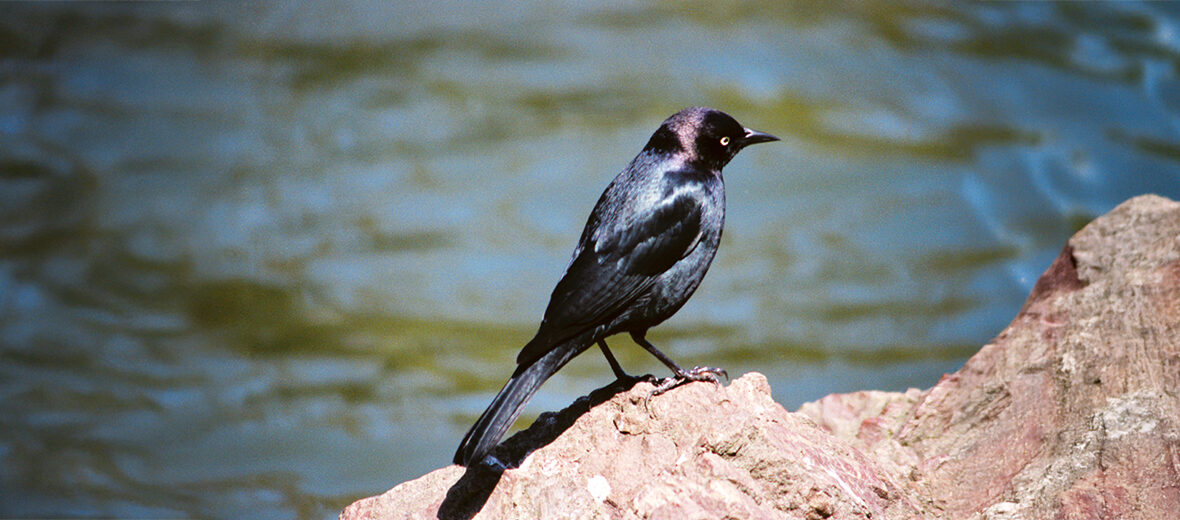
The Brewer’s blackbird is a New World (from the Americas) blackbird species that can be found in Canada, United States, Mexico, and Central America. They face the threats of habitat loss and destruction at the hands of wildfires, hunting, and trapping. However, they are abundant enough to be listed as Least Concern by the IUCN. Their populations are decreasing though.
First the Stats…
Scientific name: Euphagus cyanocephalus
Weight: Up to 2.2 ounces
Length: Up to 10.3 inches
Wingspan: Up to 15.5 inches
Lifespan: Up to 12.6 years
Now on to the Facts!
1.) They are named after the ornithologist Thomas Mayo Brewer.
2.) These birds can be found from sea level to elevations of up to 8,000 feet.
3.) Brewer’s blackbirds have evolved to become very adaptable, especially to the presence of humans, and can often be found among urban and suburban locales, in parking lots, schools, and more.
4.) The western populations are permanent. But the northern populations typically migrate to the southeastern United States, Mexico, and Central America for the winter.
5.) They may not be large, but they are very bold in that when a predator approaches, they will often dive on them. Be it a hawk or human, they will sound an alarm call and take to dive bombing the perceived threat.
But wait, there’s more on the Brewer’s blackbird!
6.) In a testament to their intelligence, they have been seen following farming vehicles that churn up the ground and reveal grubs and flying insects. Fuzzy or pinky mice, nestling birds, frogs, and toads are also consumed.
7.) Berries, seeds, and insects are all on the menu.
Did you know…?
Both parents participate in feeding the chicks. But only the female incubates the eggs.
8.) Mated pairs don’t stay together all year. The same pair will reunite though for subsequent mating seasons.
9.) During the courting process, males will puff up their feathers while simultaneously spreading out their wings and tail to look as big as possible. They will then point their beak out forward.
10.) Females lay up to 7 eggs that hatch in up to 14 days.
But wait, there’s still more on the Brewer’s blackbird!
11.) Chicks, while not precocial, do leave the nest in up to just 2 weeks.
12.) Nests are built within colonies of up to 60 birds.
Did you know…?
It has been estimated that there are approximately 23,000,000 of these blackbirds in the wild, to date.
13.) Brewer’s blackbirds are protected in the United States under the Migratory Bird Treaty Act of 1918.
14.) That being said, exceptions have been granted under 50 CFR part 21 (2014) for animals that commit or are presumed to commit depredations on ornamental or shade trees, agricultural crops, livestock, or wildlife, or when they are concentrated in such numbers and manners that they are a health hazard or other nuisance.
15.) They are somewhat threatened by climate change. However, this could escalate for the worse if temperatures continue to rise. If temperatures rise by 37.4ºF, they could lose up to 30% of their current range.
Now a Short Brewer’s Blackbird Video!
Be sure to share & comment below! Also, check out the Critter Science YouTube channel. Videos added regularly!
Want to suggest a critter for me to write about? Let me know here.
Some source material acquired from: Wikipedia & IUCN
Photo credit: Lee Karney




